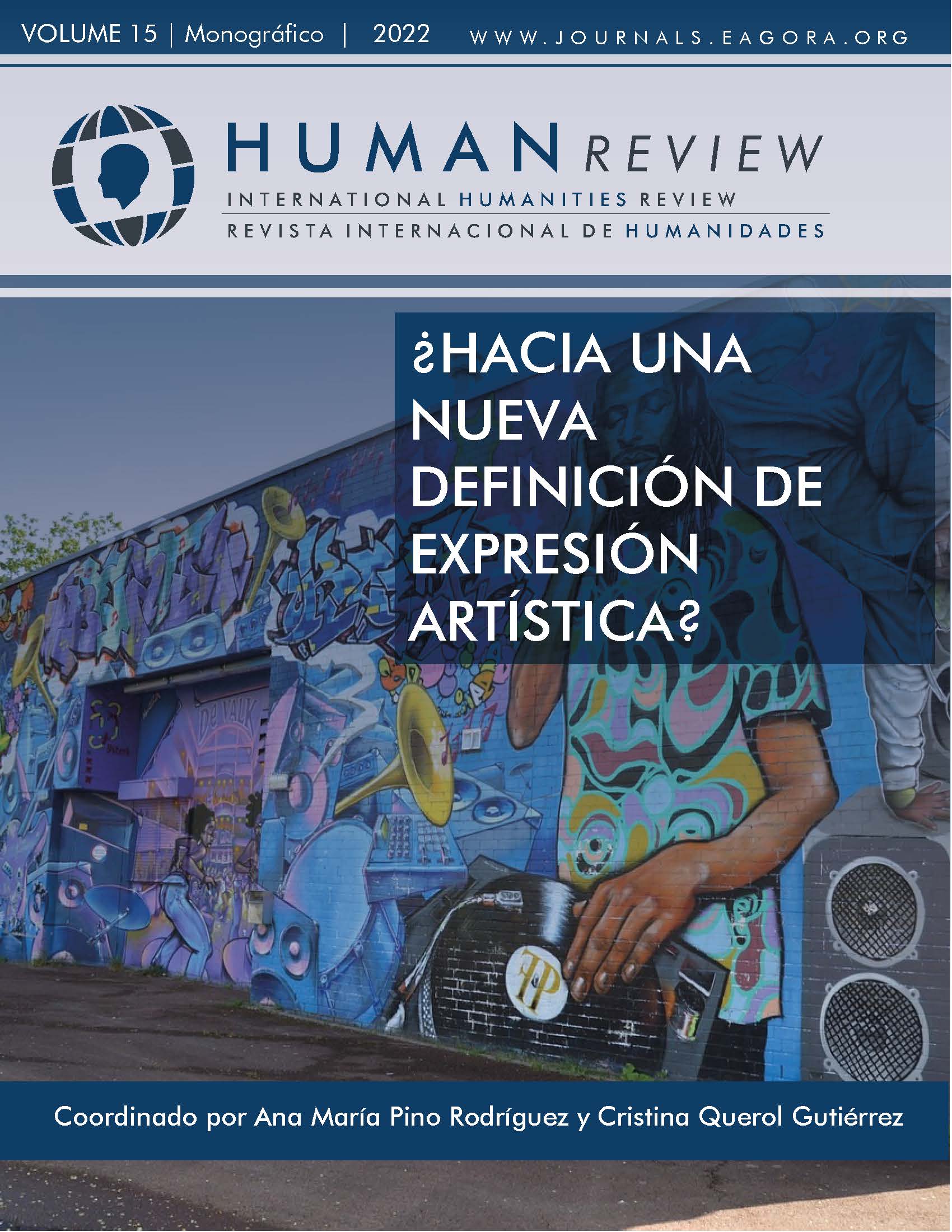Electronic literature as part of english literature
DOI:
https://doi.org/10.37467/revhuman.v11.4333Keywords:
Electronic Literature, Digital Literature, E-poetry, Reading, Woman, English StudiesAbstract
This essay introduces an approach to teach electronic literature in English Studies students; first introduces to the students what electronic literature is, that is, its main features, goals and genres. Secondly, it provides examples of women writers and their importance in the development of this kind of literature. Thirdly, it shows two electronic literary works written by women that may be part of the course’s core readings. This article dives into and breaks apart these literary texts through an introduction and a close reading of them.
References
Aarseth, E. J. (1997). Cibertext. Perpectives on Ergodic Literature. The Johns Hopkins University Press.
Borràs, L.; Memmott, T.; Raley, R. & Stefans, B.K. (2011). The Electronic Literature Collection. Vol. 2. collection.eliterature.org/ 2/.
Berens, K. I.; Murray, J. T.; Skains, L.; Torres, R., & Zamora, M. (2022). Electronic Literature Collection. Vol. 4. https://collection.eliterature.org/4/.
Bolter, J. D. & Grusin, R. (1999). Remediation. Understanding New Media. MIT Press.
Boluk, S.; Salter, A.; Garbe, J.; & Flores, L. (2016). Electronic Literature Collection. Vol. 3. https://collection.eliterature.org/3/.
Ciccoricco, D. & Large, D. (2019). Caution, Simulation Ahead. Complexity and Digital Narrativity. In Grishakova, A. & Poulaki, M. Narrative Complexity. (pp. 56- 72). University of Nebraska Press.
Chetcuty, C. (2016). Samantha Gorman, Danny Cannizzaro: Pry. CounterText, Volume 2, Issue 2, Page 256-263, https://www.euppublishing.com/doi/full/10.3366/count.2016.0055.
De Gregorio Robledo, Y. (2012). Aproximación a Fitting the Pattern de Christine Wilks. In Ferrer, A., & Chico-Rico, F. Cibercultura i comparatisme. Ciberliteratura y comparatismo. Universidad de Alicante-SELGYC [Sociedad Española de Literatura General y Comparada], pp. 75-82.
De Gregorio Robledo, Y (2019). Analysing E-lit as Work of Literature: Is it Possible?. Journal of Comparative Literature and Aesthetics, vol. 42, pp. 109-115.
Di Rosario, G., Meza, N., & Grimaldi, K. (2021) The Origins of Electronic Literature: An Overview. In J. O’Sullivan. Electronic Literature as Digital Humanities: Contexts, Forms, & Practices. (pp.9-26). Bloomsbury Academic.
Hayles, N. K. (21 March, 2008). Electronic Literature. New Horizons for the Literary. Notre Dame Press.
Hayles, N. K., Montfort, N., Rettberg, S. & Strickland, S. eds. (2006). Electronic Literature Collection Volume One [online]. Electronic Literature Organization, collection.eliterature.org/1/index.html.
Jenkins, H. (2007). Transmedia Storytelling 101. Confessions of an Aca-Fan. http://henryjenkins.org/blog/2007/03/transmedia_storytelling_101.html.
Pressman, J. (2018) The Novel in the Digital Age. In Bulson, E. The Cambridge Companion to the Novel. (pp. 262-267). Cambridge University Press.
Rettberg, S. (2019). Electronic Literature. Polity Press.
Roig-Marín, A; and Prieto, S. (2021). English Literature Students’ Perspectives on Digital Resources in a Spanish University.The Journal of Academic Librarianship. Vol. 47. Issue 6. https://doi.org/10.1016/j.acalib.2021.102461.
Wilks, C. (2013). Repurposing and Fitting the Pattern. In Mencía, M., & Husárová, Z. Enter+: Creative manual for repurposing in electronic literature. (pp. 36–41). Dive Buki.
Willis, H. (2016). Fast Forward: The Future(s) of the Cinematic Arts. Wallflower Press.
Downloads
Published
How to Cite
Issue
Section
License
Those authors who publish in this journal accept the following terms:
- Authors will keep the moral right of the work and they will transfer the commercial rights.
- After 1 year from publication, the work shall thereafter be open access online on our website, but will retain copyright.
- In the event that the authors wish to assign an Creative Commons (CC) license, they may request it by writing to publishing@eagora.org









